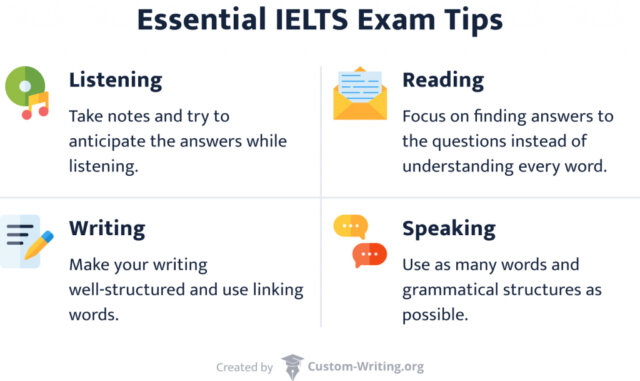
IELTS Canada PR Study Help
By Naina Singh Chauhan
IELTS is an important exam to clear with desired bands to apply for Canada PR profiles. What profiles are valid for IELTS Canada PR Study? These profiles are of various genres:
- Foreign Skilled Workers (FSW)
- Canadian Experience Class (CEC)
- TR to PR pathway (TR – PR)
- International Student Class (ISC)
- Provincial Nominee Program (PNP)
- International Experience Canada (IEC)
Clearing IELTS is always on the minds of the PR aspirants. However, many are clueless about how to crack it, and that’s where I come in. Consider me as a tutor and a friend for all of you. I have cracked the exam! ‘A tutorial worth reading and listening’ is what you will say after reading my kitty of IELTS tips and tricks. “We are investing lakhs of rupees in the Canada PR application. Will we be able to crack the IELTS such that PR is guaranteed?”, you may ask. Of course, you will if you follow my IELTS guide diligently. All of it is as per my personal experience of attempting IELTS exams.
You can download my set of IELTS resources from the below links:
- Personal Experience Tips & Tricks
- IELTS General Essential Phrases for writing Formal Letters
- Speaking Vocabulary & Sample Answers
- Writing Task 1 Sample Letter
- IELTS Writing Task 2 Synonyms for 20 most common adjectives
- Useful phrases and expressions for a Band 8 Score
Akshay Khadse, who has also scored CLB10 in IELTS General Exam, has been generous in sharing his IELTS Strategy in an online notebook. It’s heaven for PR aspirants! Apart from the above resources, you must follow Akshay’s practice strategies as well! You can find it here.
IELTS Tips and Tricks
Howdy from Naina! I got to know that you are also giving IELTS soon, and I will surely help in your learning, and learning smart tricks to crack the IELTS. All the information provided is as per my observation and experience. After reading my tips and tricks, you will crack IELTS in the first go with your desired bands in all four sections: (1) Listening (2) Reading (3) Writing (4) Speaking. The desired individual bands to achieve a high CRS score is 8.5, 8, 7.5, 7.5 in Listening, Reading, Writing & Speaking respectively.

Firstly, please head to E2language.com (or E2Language on YouTube) and Fastrack IELTS by Asiya on YouTube, and check out their tutorials for each section of IELTS. You will get valuable information + vocabulary lists + how to frame sentences in writing, as well as tips for listening, reading & speaking. The Computerized-based IELTS format is explained as well, such that you are familiar with it before the test day.
Please note: E2Lanugage.com has free live tutorials (usually at 5:30 AM or 9:30 AM on the availability – make sure you make a profile and practice!)
Second, please note the below tricks that I had applied after collecting info on the web on how to crack the IELTS (but you need to go through the above YouTube channels for more detail).
Listening, Reading, Writing & Speaking sections of the IELTS exam
Listening: Skim through the questions first quickly before the audio begins (they will give you time as instructed). This is important to alert your mind to focus on the words that the speaker says in the audio. You don’t need to listen to the instructions of the listening section after hours of practicing. You can use the time to read the questions in advance and spot the correct answers when listening begins. Listen to the audio carefully and jot down the answers. Make sure you pay attention to the audio, as the speaker may trick you with incorrect answers as well. Also, the audio is played only once, so you need to be super attentive to any distractions. You need to be familiar with the accents of the speaker as you may get British/Canadian/American/Australian/Indian nationality speakers.
Reading: Skim through the questions first before you go ahead with the reading comprehension passages. Then skim through the passages carefully don’t need to give more than a minute to each passage. Underline significant words in the passage to help you with the answers to the questions. Then go back to the questions and answer them. True/False is the most difficult – practice each set of reading questions multiple times before you attempt the mock reading exam. You need to be confident of all sections first to attempt it on Final Exam IELTS day. I will share the YouTube Channel for Mock Exams. They are challenging, but you will be 100% confident after attempting many each day until Saturday! Head to V2 IELTS YouTube Channel and you shall excel with the practice/mock exams.
There is another way to crack your reading skills (below):

Check out this practice task here!
Also read: Canada Student Life
Writing: This is one of the technical and strong sections of the IELTS exam. There are two parts:
- Letter Writing (20 marks): Formal, Informal, Casual
- Essay (40 marks): Opinion, Advantage or Disadvantage, Problem/Causes & Solution, Two-Part (Check Practice Questions Here)
The first part is under the 150-word limit and the second under the 250-word limit. You need to make sure that you are using many types of sentences. These sentence types include Simple/Compound/Compound-Complex/Phrase-Idiom/Question type of sentences + correct grammar (don’t forget ‘a’ or ‘the’) & great word choice (to boost the lexical resource component as a lexical resource means how well you can experiment with vocabulary and its synonyms/antonyms). If you display great grammar, then your writing score will elevate, otherwise, the overall score will drop. If anyone wishes to practice, they can send their writing samples to naina1989@gmail.com. I will be more than happy to evaluate them at no extra cost. Also, please focus on the below sentence constructions:

Please note some important pointers below:
- Don’t write like the way you speak and talk to people. Both are not the same.
- Always use articles before each noun, please do not miss them.
- Generally, people tend to confuse sentence constructions if they are multilingual. Please focus on one language at a time. If you are focusing on improving your writing in English, think in English and not in Hindi or any other language (example: your mother tongue).
- Always read the sentences in the letter writing section and the essay writing section of IELTS many times out loud in your head before you move on to the next section.
Speaking: Be a natural speaker – don’t use any accents. If you use accents, your speech will feel fabricated. There are three sections:
- About yourself and how have you spent your holidays or anything similar related to you.
- A topic that the examiner will provide on a card, and you need to speak on that topic for 2 minutes.
- Few questions on the topic in part 2. Make sure you use a good choice of vocabulary (like what you use in writing) & also involves many idioms! A good hack is to just make up stories along the way in case the topics don’t relate to you. I had made a couple up.
Why don’t you look at how the idioms are constructed for speaking purposes? (Source: Fastrack IELTS by Asiya’s Newsletter). Below are a few examples:
- Whether you think that something costs an arm and a leg (= is very expensive) or you simply draw a blank when you hear a question (= cannot remember something), idioms sound perfect in any IELTS Speaking situation. In Writing Task 2, however, it’s better to stick to a more formal style.
- Bear in mind (= remember) that you should use idioms or idiomatic language in your speaking answers appropriately and–ideally–effortlessly. Don’t overkill it (= using too much of something reduces its effect).
- Taking an IELTS exam is not a walk in the park (= it’s not easy), and I hope you will pass it with flying colors (= to pass with a great result).
I will keep updating this space for more strategies! Stay tuned!
Also, to keep track of the Express Entry draws, stay tuned!
Let’s practice?

Correct answers:
1. b The answer can’t be singular as there is no article “a” in the question. Watch the IELTS Listening FAQs video to learn how articles can help you find correct answers.
2. yes
3. no Your answer should be in the correct format.
